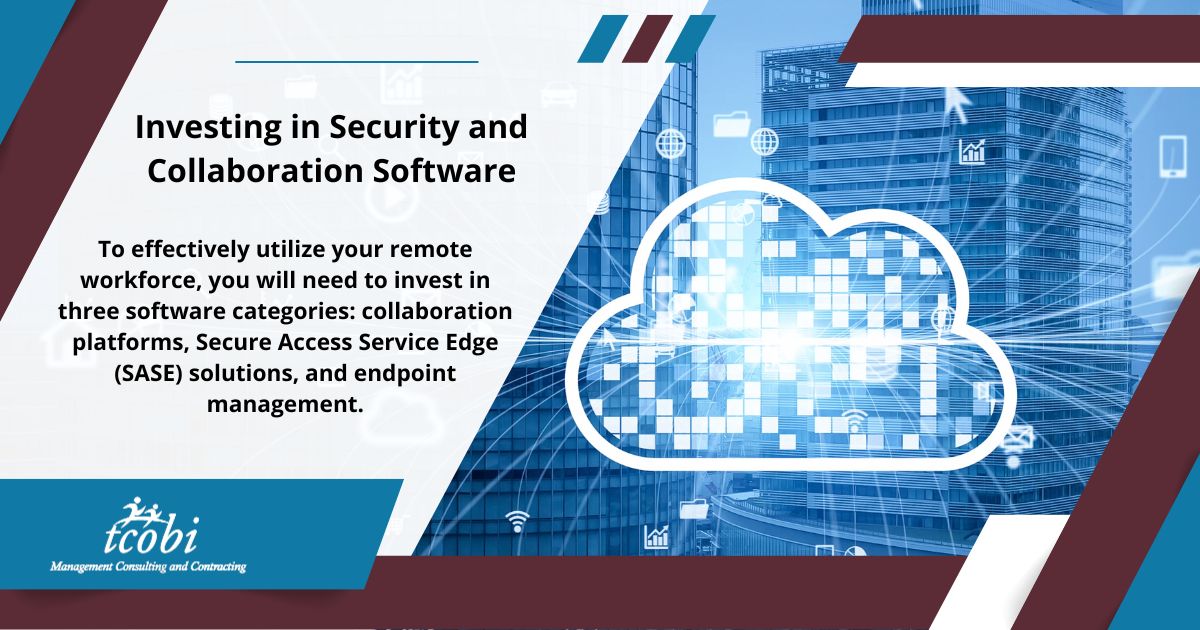Those in leadership and executive positions are always there when those…

Utilization of the Remote Workforce: Investing in Security and Collaboration Software
The prevalence of remote workers during and after the pandemic has forced businesses to deal with a new wave of collaboration struggles and security risks. Software and technology companies like Microsoft have responded to these needs with new software or updates to their existing offerings. To effectively utilize your remote workforce, you will need to invest in three software categories: collaboration platforms, Secure Access Service Edge (SASE) solutions, and endpoint management. These three components work together to provide your remote employees with an efficient and secure workspace. This blog will give an overview of each component and some examples of companies or specific software that can help your business.
Collaboration Platforms
Collaboration platforms are cloud-based software that allow your employees to seamlessly connect, hold meetings, and share files from anywhere and on any device. These platforms were popular long before the pandemic, but became far more integral to work completion once employees could not come into the office. Different options may work better for you depending on what applications your business already invests in or prefers. For example, if your business already uses Microsoft 365 applications, then Microsoft Teams will easily integrate into your established workflow. Similarly, if your business is used to Google Workspace, Google Meet and Google Chat might work better for you. Another popular competitor for professional workplaces is Slack.
Secure Access Service Edge (SASE) Solutions
SASE solutions are a little less universally understood than collaboration platforms, but are equally important for secure remote workers. Essentially, SASE solutions secure the traffic between endpoints (individual devices) and the cloud (where your data is stored through your collaboration platform). This provides workers with secure access to network resources from anywhere. SASE solutions have been a game changer for many organizations by enabling better security control, visibility, and mitigation capabilities, regardless of the worker modality. While some businesses have already adopted a SASE solution, Microsoft’s entry into the market will accelerate and streamline that adoption. Microsoft recently released a Secure Service Edge (SSE) solution, which covers the SASE security components, but not the networking features. However, many other SASE market leaders, such as Cisco, CATO Networks, Palo Alto Networks, Versa Networks, Forcepoint, and Fortinet, have been around for a while.
Endpoint Management
Finally, endpoint management is the security software for the actual device remote workers are using. In technical terms, endpoint management is the application of policies to maintain the functionality of networked devices and protect them from unauthorized access. Some security software may come with the device, such as Microsoft Defender Antivirus, whereas endpoint management software is often specifically downloaded onto employees’ devices by the business to enable complete and controllable security. Some examples include Ivanti, Microsoft Intune, SentinelOne, Endpoint Central, and Jamf Pro.
Each component is essential to ensure your business utilizes your security and collaboration opportunities for your remote workforce. TCOBI has been providing senior financial and leadership expertise to a variety of organizations in a number of different industries for 40+ years. We have adapted to many changes in these industries over the years, and we can help your business adapt, too.



